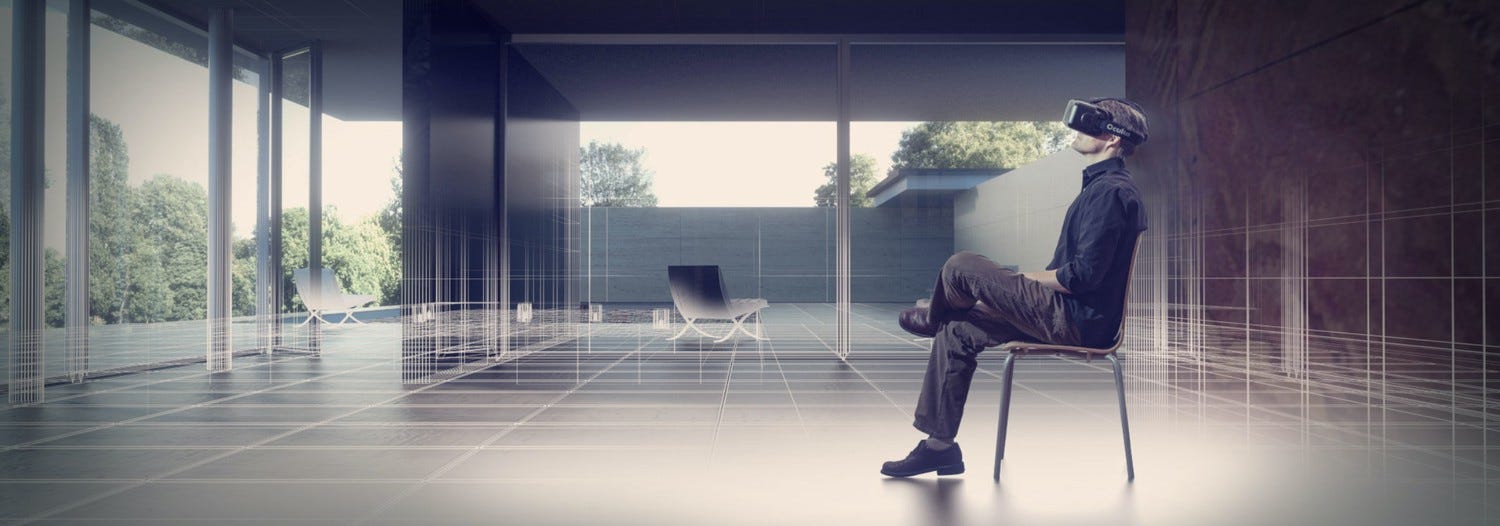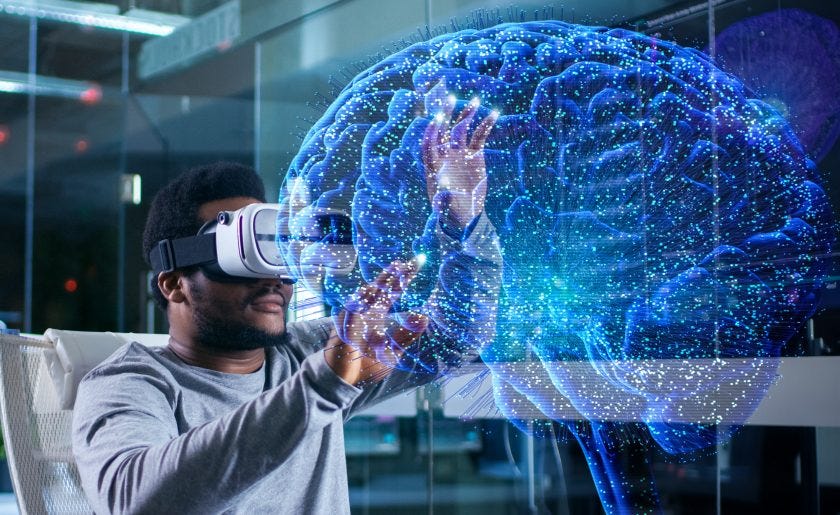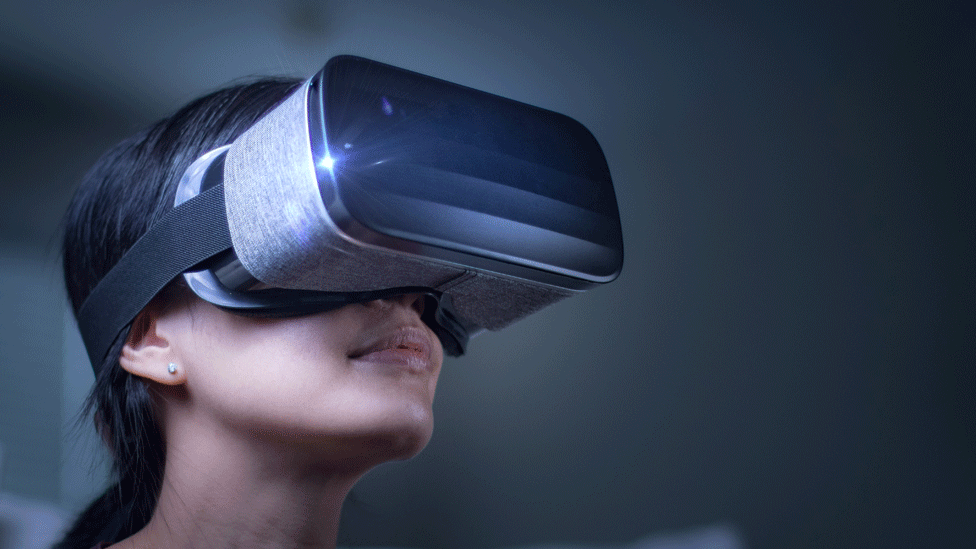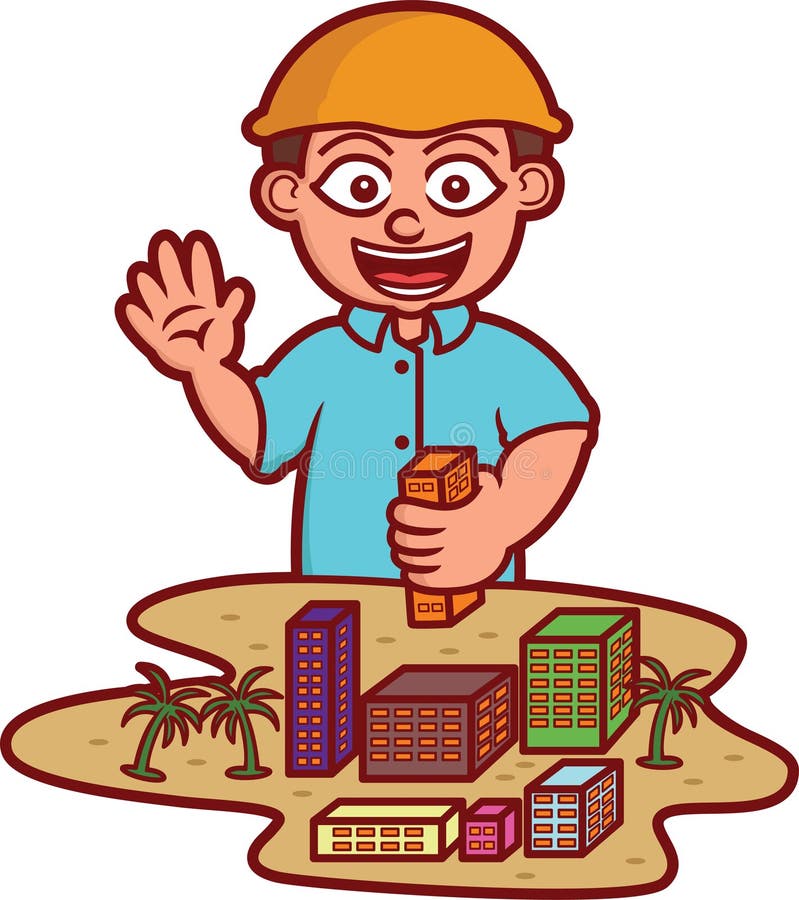VR is Changing Architecture’s Present and Future.
Megan Lubaszka logs onto her computer at Gensler’s Los Angeles office every Tuesday. She joins a GoToMeeting, puts on her VR headset, and enters the virtual world. She waits for the other avatars to appear in her vicinity. When they do, she notices the appearance of their names in bubbles above their heads.

VR is Changing Architecture’s Present and Future.
Also Read: Buro Happold’s SE 2050 commitment calls for zero embodied carbon in all future projects.
Lubaszka—or, more precisely, her avatar—waves. Once everyone has gathered, the project’s lead designers will take them on a tour of this soon-to-be-real world. It’s a fairly straightforward design critique—except that it occurs in the cloud, “within” the structure being inspected.
“VR Jams” have evolved into a sacred weekly ritual at 28 Gensler offices worldwide. “There is a reason we do them each week on our own time,” Lubaszka explains. It’s such a wonderful experience to accompany a design team into their project and hear them exclaim, ‘Oh, that proportion worked out beautifully here!’ It’s simply this sense of awe. ”
Across the United States, architecture firms are rapidly integrating virtual reality (VR) into their practices. However, for the uninitiated in virtual reality, wrapping one’s head around the technology and how it differs from related technologies such as augmented reality (AR) or mixed reality (MR) can feel overwhelming.
Also Read: Architects Paritzki and Liani built a triangular white stone house.
Even experts will use these terms interchangeably, which is confusing. Why? As a result of the technology’s inherent nature, Virtual reality and augmented reality all begin with the same thing: a three-dimensional model. Both virtual reality and augmented reality are modes of experiencing that model—outside of a screen.
VR is when you use a headset such as the Oculus Rift or the HTC Vive to explore and interact with a modelled environment as if you were inside a video game. Eric Johnson, a writer for Recode, explains it as follows: “When VR users look around — or, in the case of more advanced headsets, walk around — their view of the world adjusts in the same way that it would if they were looking or moving in real life.” You may be most familiar with virtual reality; affordable headsets have become more accessible, and the film industry has already produced some VR films.

VR is Changing Architecture’s Present and Future.
Anyone at Gensler who wishes to participate in the firm’s weekly VR Jams needs only to visit their office’s VR station, don a headset, and join the cloud-based critique. Without headsets, those without can follow along by viewing multiple screens of content that depict what the VR participants are seeing, their reactions (via webcam), and their avatars in the project’s model. It’s eerily similar to the control room of a morning news programme! Megan Lubaszka, Gensler’s Los Angeles office’s VR Jams manager, exclaims.
The field of augmented reality is still in its infancy. The majority of people became aware of augmented reality (AR) through a small app called Pokémon Go, which allows smartphone users to “capture” Pokémon that appear to inhabit the real world around them (via the lenses of their phone cameras).
In contrast to virtual reality, which creates a virtual world, augmented reality superimposes digital objects or imagery on our physical world via a smartphone, tablet, or specialised augmented reality viewer. Virtual reality advancements will almost certainly influence augmented reality and vice versa.
Also Read: Homes With Lush Indoor Trees That Add To The Peace
Virtual reality in our December 2016 “Year in Review,” we suggested that architects and designers had reached a tipping point with VR. The advantages of virtual reality as a communication tool are self-evident. It immediately provides clients with an understanding of the space. There is no need for abstraction. The dimensions become apparent. The designer’s intent becomes visible.
While the majority of virtual reality renditions of architectural models are still quite crude, it’s only a matter of time before they become frighteningly realistic. Sonny+Ash, a Chicago-based visualisation firm, is already leveraging gaming technology to create virtual reality visualisations that allow users to experience every detail, from the texture of upholstery to the reflection of light on a surface.
VR is Changing Architecture’s Present and Future.
However, a small number of firms are now investigating VR’s latent capacity to disrupt the design process itself. The challenge is largely technical in nature. Businesses that are serious about investigating virtual reality have formed partnerships with virtual reality software providers (such as IrisVR) or even hired their own software developers. For example, Gensler, for example, courted a relationship with video game technologist Henry Yu to facilitate his weekly VR design critiques.
Yu decided to help build things in the real world instead of participating in the destructive violence of the gaming industry. His company, Kalloc Studios, created Fuzor, a plug-in for Revit or Rhino that transforms 3D models into roamable virtual environments where designers, like gamers, can collaborate and meet. Some firms believe that by developing this level of expertise, we will revolutionise not only the way we conceptualise designs but also the way our world is physically constructed and experienced.
Also Read: LeBron James Innovation Center Blending Modernism With Sport
Immersed in information

Immersed in information
“Many of our competitors are essentially recreating an architectural space as closely as possible to reality, creating a photo-realistic representation of how the completed building will feel.” Brian Hopkins, director of applied computing at Ennead Architects, explains why his firm decided to venture into virtual reality just a few months ago.
“We chose a different approach: “What are all the things in reality that we cannot see?”How can we begin to delineate the real from the unreal—the real being the sensorial, or sensory world, and the unreal being that which we cannot see? ”
Hopkins is referring to the emerging field of immersive analytics, a cross-disciplinary effort to elevate data visualisation. Immersive analytics appears to be a natural partner for architecture—after all, each model of a building already contains numerous complex data sets waiting to be displayed.
For instance, Hopkins’s team was able to overlay environmental data about a planetarium in Shanghai on the design itself, using the Ladybug and IrisVR plug-ins for Grasshopper 3D. Suddenly, the designers felt everything they knew about the data set—how much light would be concentrated where, where morning and afternoon sunbeams would strike. According to Hopkins, “it renders the quantifiable qualitative.” We begin to describe light in terms more akin to metaphor than data analytics. We’re attempting to humanise data. ”
Also Read: A spiral ramp surrounds an arts centre in China.
Planners Face a New Reality

Planners Face a New Reality
It’s not difficult to envision a future in which immersive analytics, while extremely beneficial for architecture, become critical for urban planning, a discipline replete with complex data sets. Additionally, it is in urban planning that the promise of augmented reality becomes more apparent.
For AECOM, which frequently undertakes large-scale transportation and infrastructure projects spanning miles, augmented reality has already established itself as a critical visualisation tool. By incorporating maps and satellite imagery into AECOM’s plans, AR enables designers to view a site from a God’s-eye perspective, complete with accurate topology and dimensions.
They then load in various layers of information via custom codings done in-house, such as different iterations or stages of the project, or even environmental or social conditions that exist outside the scope of the project. Following that, these layers are superimposed on a physical model.
Morgan Garrard, an AECOM employee with the impressive titles of designer/immersive technology specialist and MR/AR/VR content developer, explains the process: “We can toggle between the standard city view, which is sort of a satellite view of the buildings, and then to, say, environmental justice areas.
” Thus, we will be able to see, through various gradients of red, which areas of environmental justice require attention… When it comes to graphs, charts, and numbers, there is only so much you can take in and make sense of at once. If you can convert all of that data to visual data and make it available for interaction, that’s a significant achievement. ”
However, what would be a much bigger deal, at least practically speaking? If that information were to be mapped onto a real-world construction site, not just a model.
Also Read: Zyva Studio’s Founder Reveals The Metaverse and Trans-Design
Constructing the Model

Constructing the Model
Since the technology’s inception, fabrication and construction applications have been regarded as a kind of holy grail. SHoP Architects has the best sense of what an augmented reality-enhanced future might look like. The firm set a precedent with the design and fabrication of the Barclays Center in Brooklyn, where 12,000 unique facade panels were cut directly from a high-resolution 3D model created using the software more commonly used in the aerospace industry.
Although Barclays does not yet use AR reliably on construction sites, the bank has laid the groundwork for this eventuality. Building Barclays was about “figuring it out, road-mapping best practises in real-time,” according to John Cerone, SHoP’s associate principal and director of virtual design and construction. Cerone sees a clear link between that project and one currently underway at the Botswana Innovation Hub. As was the case with Barclays, each component was digitally modelled and machine-cut. There are no drawings on the construction site, only IKEA-style assembly diagrams. Cerone believes it is “inevitable” that VR/AR will eventually supplant diagrams and become an integral part of the construction process on the firm’s next project. “It is far too efficient not to.”
Architects using VR will be able to intuitively understand the dimensions of construction components—how large they are, whether they can be lifted by one person, and so on. Additionally, because the machines cut the pieces from the same models, they will know precisely what is being sent to the construction site.
Construction workers will have those same digital models juxtaposed with their physical surroundings using augmented reality viewers in their helmets or glasses (start-up Stimuli offers this option). “Then we’re both occupying the same digital/physical space,” Cerone observes. It is virtual because reality is being digitised, but it is representative of what is truly there. ”
Indeed, the fusion of the physical and virtual worlds is perhaps the most exciting—and revolutionary—application of virtual reality and augmented reality technologies in the architecture profession. One day, architects will design entirely in a virtual reality environment; those files will be directly used in digital fabrication; contractors will be able to view the digital and physical worlds concurrently to guide construction.
Augmented reality avatars will provide insights into how to make buildings more comfortable for their occupants, and facility managers will be able to cross-reference real data from buildings to keep energy costs low. When this occurs, architecture, as we know it, will never be the same.
Written By Tannu Sharma | Subscribe To Our Telegram Channel To Get Latest Updates And Don’t Forget To Follow Our Social Media Handles Facebook | Instagram | LinkedIn | Twitter. To Get the Latest Updates From Arco Unico
